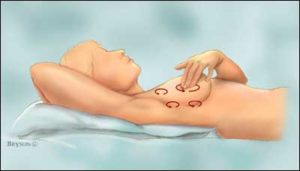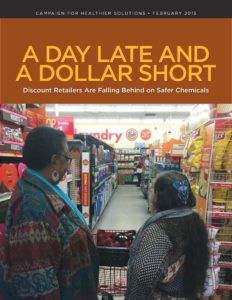
There are several different types of breast cancer. The Cancer Treatment Centers of America explains them clearly here. There are also many possible causes of breast cancer:
* Heredity plays a role in about 15% of women who get breast cancer. In other words, if your mother, sister, or aunt had breast cancer, you’re slightly more at risk for getting it, too.
* Long-term heavy smoking is linked to a higher risk of breast cancer. You may believe that smoking only causes lung cancer. But it’s affects breast cancer as well.
* Toxic chemicals and endocrine disruptors in the environment are increasingly being linked to breast cancer and a variety of other health problems. Endocrine disruptors are synthetic chemical compounds that mimic female hormones. They’re found in some plastics, feed that’s given to cows, and certain cosmetics and personal care products. Pesticides and PCBs (polychlorinated biphenyls) could pose a breast cancer risk, too, says the American Cancer Society. (Here’s how you can avoid endocrine disruptors day-to-day.)
* Simply being a woman is the main risk factor for developing breast cancer. Men can contract this disease as well, but it is 100 times more common among women than men, since women have more of the hormones that promote breast cancer cell growth.
Early detection starts with you. That’s why self-exams are so important. Pick a regular day each month so it becomes a habit to give yourself a breast check-up. Here are three ways to give yourself a breast self-exam that both BreastCancer.org and the National Breast Cancer Foundation recommend:
Lying Down:

* Using your left hand, move the pads of your fingers around your right breast gently in small circular motions, covering the entire breast area and armpit. Use light, medium, and firm pressure.
* Squeeze the nipple; check for discharge and lumps. Repeat these steps for your left breast.
Remember: If you notice anything at all that strikes you as unusual, set up an appointment with your health care provider. She will probably ask you to come in for a clinical exam, and possibly a mammogram. If you do have breast cancer, you will have found it sooner rather than later.
In Front of a Mirror:
* Visually inspect your breasts with your arms at your sides.
* Next, raise your arms high overhead. Look for any changes in the contour, any swelling or dimpling of the skin, or changes in the nipples.
* Now, rest your palms on your hips and press firmly to flex your chest muscles. Don’t be concerned that your left and right breasts don’t exactly match; few women’s breasts do. Look for any dimpling, puckering, or changes on each breast individually.
Again, if you feel or see anything that seems unusual, make an appointment with your healthcare provider.
In the Shower:
* As the picture above shows, using the pads of your fingers, move around your entire breast in a circular pattern. Move from the outside to the center.
* Check the entire breast and armpit area. Feel for any lump, thickening, or hardened knot.
* Check both breasts around the same time each month so you become familiar with your breast tissue and will be able to recognize anything out of the ordinary.
If you notice any changes, make an appointment to see your healthcare provider immediately.
I spend a lot of time here at Big Green Purse trying to raise awareness about ways to prevent cancer by reducing our exposure to toxic chemicals and pollution. But that’s only half the battle when it comes to breast cancer.
Stay well. Check your breasts!
RELATED POSTS
Report Links Breast Cancer to Environmental Factors















